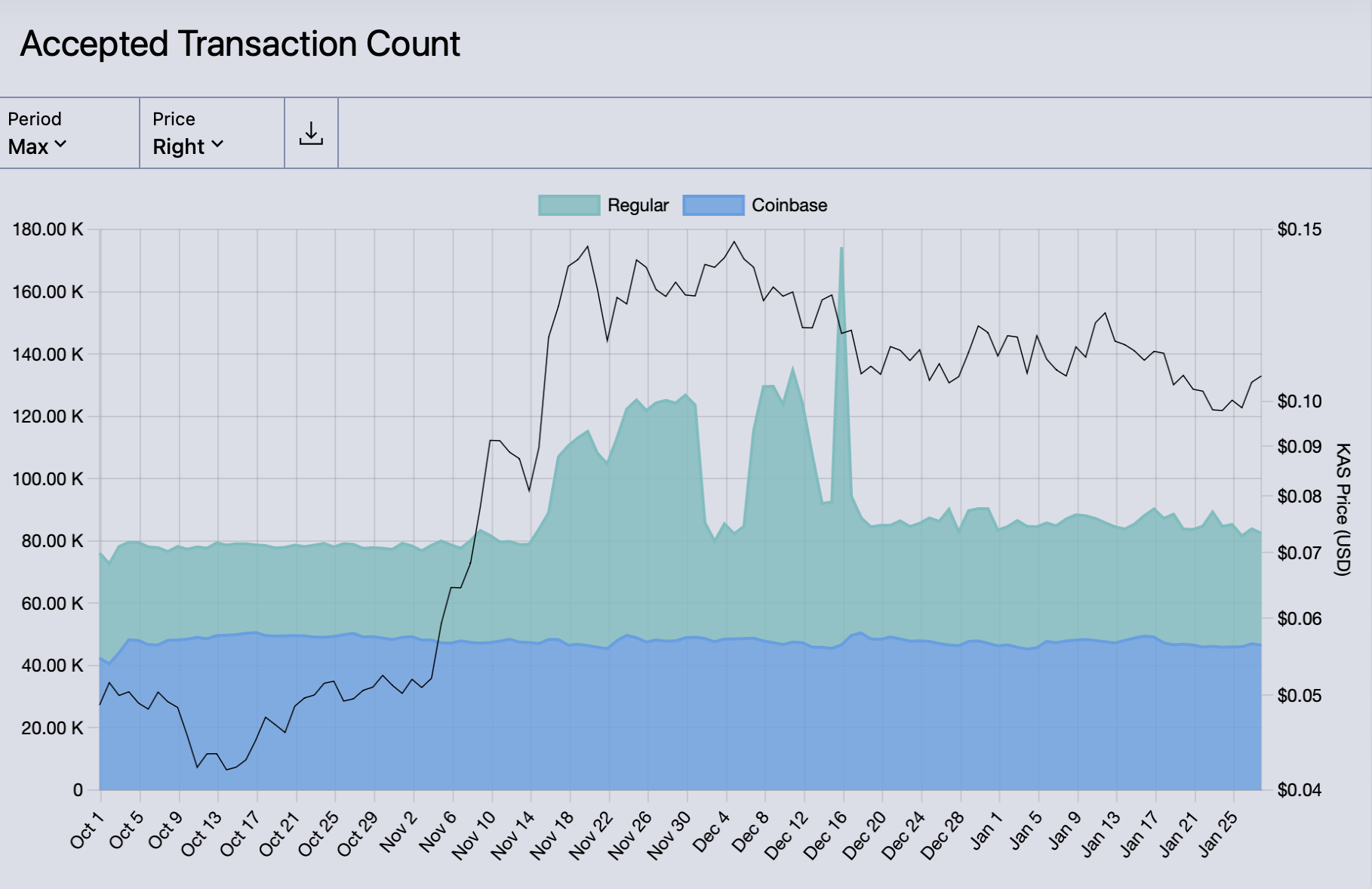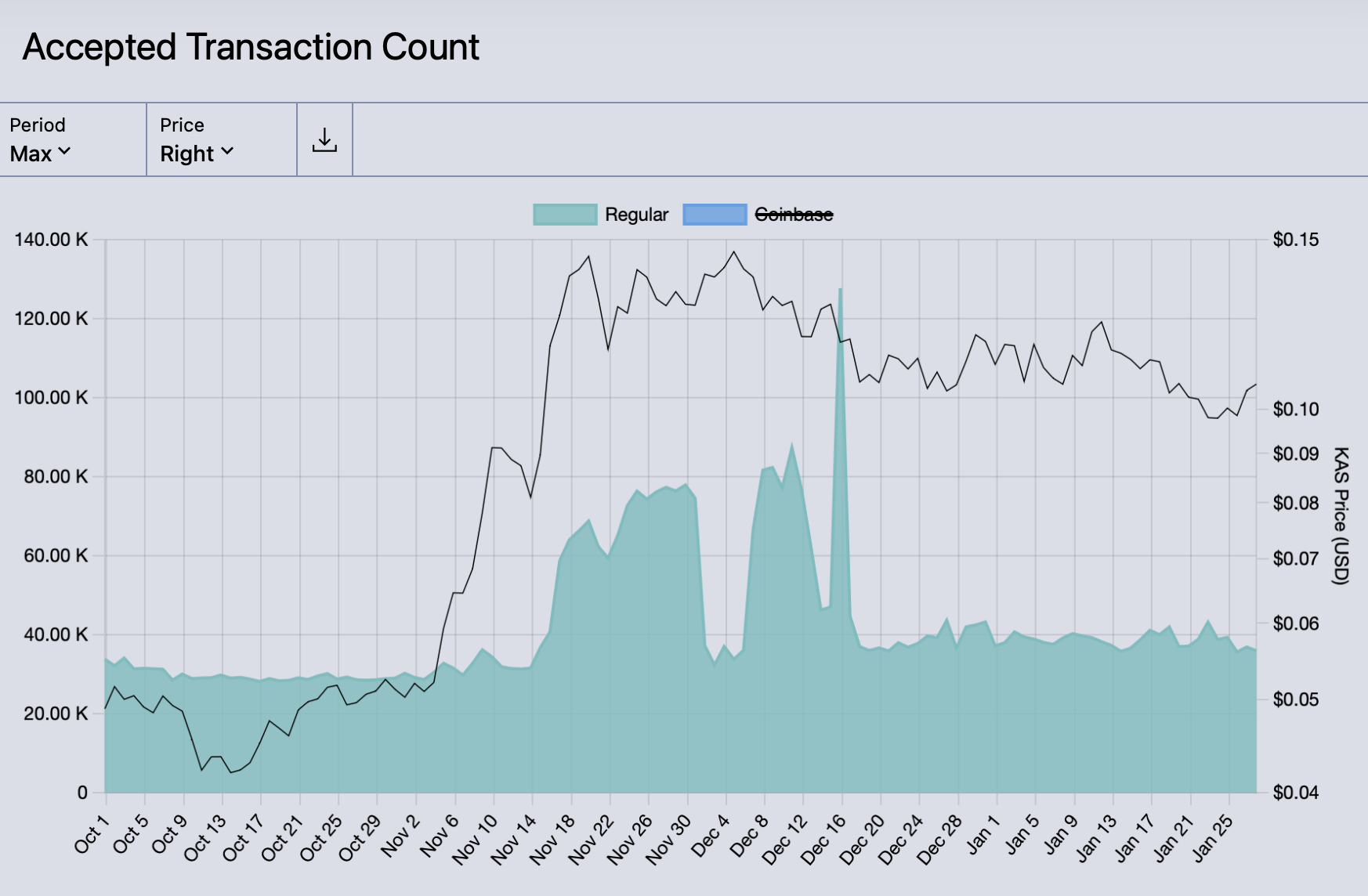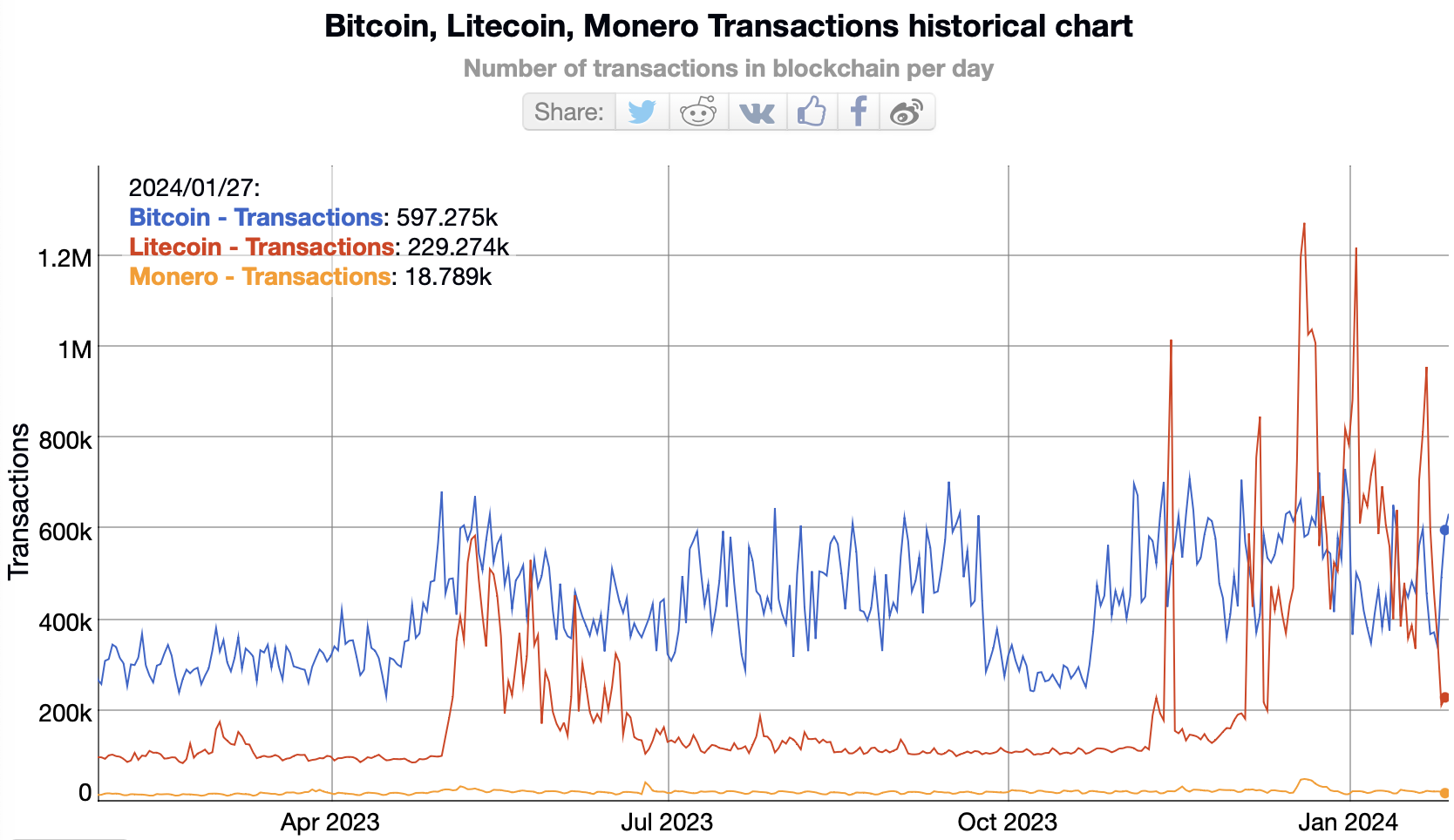
The Kaspa Transaction Count Chart
Learn more about the Kaspa Transaction Count chart - nuance, insights, and a breif comparison against the "old-guard" of PoW.
Posted: Jan 30, 2024
By: Kaspalytics
Overview
The Kaspa Transaction Count Chart shows the daily count of accepted transactions on the Kaspa network. Despite some nuance, this chart is a good barometer for network usage as it uses on-DAG (on-chain) data.
 Kaspa Transaction Count Chart.
Kaspa Transaction Count Chart.
While this chart is relatively straightforward, it does warrant a short post to dive deeper.
Coinbase vs. Regular Transactions
The chart shows two separate daily data sets:
- The count of coinbase transactions = transactions creating coins by paying miners block rewards
- The count of regular transactions = transactions sent by entities (people, computers, etc.)
By charting these separately, we are able to break out regular transactions. Which allows one to get a better feel for actual network usage by entities.
The Nuance of Regular Transactions
Here is where we see some nuance. As mentioned above, regular transactions can be defined as an entity initiating the transaction. Entities being people, companies, exchanges, mining pools and so on. These transactions can be sent manually, or a program can be used to automate transactions.
It’s important to note that regular transactions include the following:
- Automated transactions.
- Transactions sending funds to self, whether that be the same address or a different address owned by the same entity.
- Transactions compounding UTXOs.
- To and from exchanges.
That list is not exhaustive. While there may be other transaction types worth noting, those are the main nuances to be aware of.
To summarize - the daily count of regular transactions includes every single non-coinbase transaction on the network.
A Barometer for Kaspa Network Usage
Despite the nuances mentioned above, the Kaspa Transaction Count Chart still provides a clear, higher-level view of Kaspa network usage.
Over the last month, Kaspa has been consistently processing 35,000 - 40,000 regular transactions per day. This is barely scratching the surface of a network that can process much more. Nonetheless, daily regular transaction counts have been slowly increasing since we started tracking data in August of 2023.
 Kaspa Transaction Count Chart - Regular Transactions.
Kaspa Transaction Count Chart - Regular Transactions.
With relatively low adoption at the time of this writing, most network activity will likely fall into one of the following buckets:
- To/from exchanges
- Mining pools paying rewards to pool participants
- Compounding transactions
We should expect the count of daily regular transactions to grow as the world onboards to Kaspa. Transaction count growth will indicate increased network usage through on-DAG (on-chain) activity. Milestones like 10 BPS, DAG KNIGHT, and smart contracts should raise awareness, grow the ecosystem, and help bring additional activity on-DAG.
… Less Than 86,400 Daily Coinbase Transactions?
At the time of this writing, Kaspa is producing 1 block per second (BPS). Which is approximately 86,400 blocks mined daily. So… one would expect there to be 86,400 coinbase transactions.
This is a result of 1.) the selected chain containing ~47,000 average daily blocks; and 2.) Kaspa’s block merging & rewards mechanism.
 Kaspa Transaction Count Chart - Coinbase Transactions.
Kaspa Transaction Count Chart - Coinbase Transactions.
Both topics are beyond the scope of this article, though very interesting. What you need to know for now is:
- There are ~47,000 selected chain blocks daily.
- Those ~47,000 selected chain blocks each contain an accepted coinbase transaction.
- Each accepted coinbase transaction pays the miner of each block in the chain block’s mergeset. Meaning accepted coinbase transactions can create multiple coinbase UTXOs, paid to different miners. This results in ~86,400 coinbase UTXOs created daily.
Comparing to Bitcoin, Litecoin and Monero
It’s always interesting to compare Kaspa against the “old guard” of PoW: Bitcoin, Litecoin, and Monero. Setting aside Kaspa’s infancy, let’s take a look.
 Bitcoin, Litecoin, Monero daily transaction counts.
Bitcoin, Litecoin, Monero daily transaction counts.
Bitcoin is consistently in the several hundred-thousand transactions per day range.
Litecoin is a little more variable. Going through periods of low usage and periods of sustained high usage.
Monero, interestingly, is in the tens-of-thousands range… right around Kaspa.